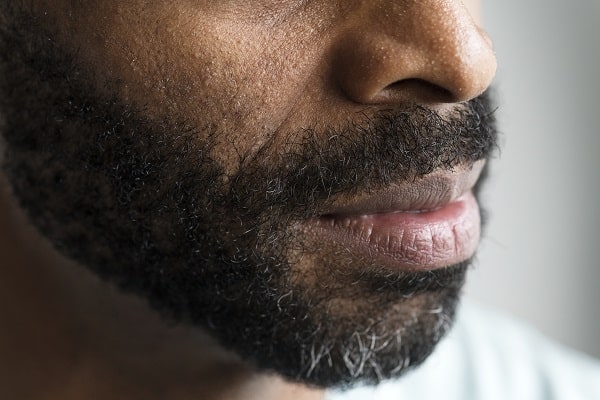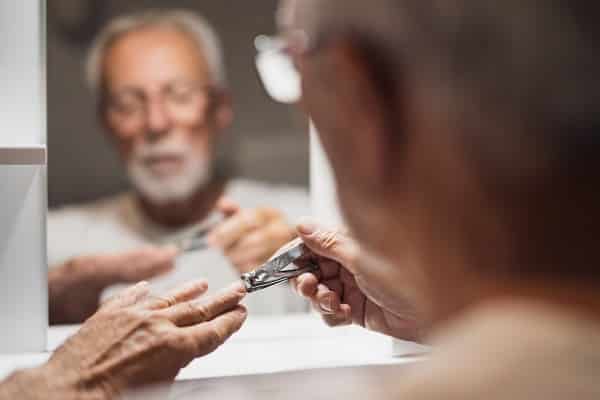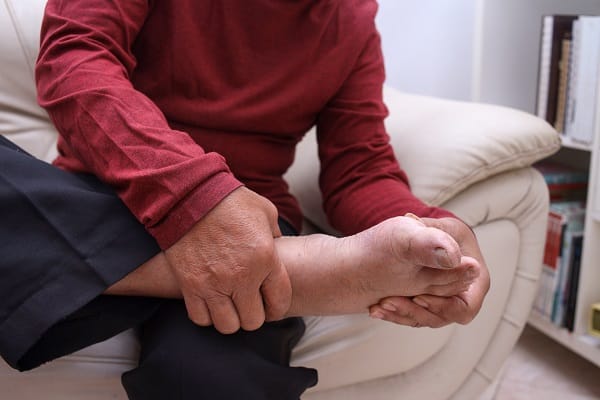In your daily life, hygiene plays a pivotal role in maintaining health and well-being. Your hands, often the primary carriers of germs, can transfer these microorganisms to various parts of the body, leading to potential health issues. Among the body parts most susceptible to this transfer, seven stand out as particularly vulnerable. Touching these areas can introduce and spread germs, leading to discomfort, infection, or even serious health problems. In this post, you will explore these seven body parts, delving into why they are sensitive and how you can protect them.
Eyes
The eyes are incredibly delicate organs that require careful handling. Touching them not only introduces germs from your fingers but may also unintentionally distribute small particles of dirt into the eye. This can lead to scratches on the cornea and significant discomfort. The tears that naturally protect your eyes contain antibodies and other proteins to ward off bacteria, but this defense can be compromised by unnecessary contact.
It’s also essential to resist the compelling urge to rub your eyes, as this can lead to more dark spots and wrinkles over time. If your eyes are itchy or irritated, you might try using a cold compress on them or applying over-the-counter eyedrops. Individuals should also wash their hands ahead of time if they have no alternative but to touch their eyes. By following these precautions, you can minimize the risk of eye infections and maintain the health of your eyes.
Nose
Many germs congregate in the nose, making it an ideal breeding ground for bacteria. The nose is one of the most frequently touched regions of the body, and this frequent contact opens up a route for bacteria and viruses to enter your system. Oils and sweat in the nose create an ideal environment for germs to grow, and research has shown that the number of germs on your hands increases up to 1000-fold after you’ve touched your nose!
Given these risks, it’s crucial to keep your hands away from your face, especially your nose. If you feel the need to scratch your nose, use a tissue instead. By avoiding direct contact with your nose and practicing good hygiene, you can significantly reduce the risk of transferring harmful bacteria and viruses to other parts of your body or to other people.
Ears
Your ears are another vulnerable area where germs might collect. It’s better not to touch your ears until you’ve introduced germs and grime into them. The ear canal lining skin is somewhat fragile and subject to microscopic wounds, which can become infected if not handled with care. Many people attempt self-treatment or probe the ear with long objects like Q-tips, nail files, or toothpicks, but these actions can scratch and damage the skin.
Instead of attempting to clean or treat your ears yourself, it is suggested that individuals visit an otolaryngologist for a check. Professional medical care ensures that your ears are treated with the proper tools and techniques, minimizing the risk of injury or infection. By recognizing the sensitivity of the ears and avoiding unnecessary contact or probing, you can maintain the health of your ears and prevent potential complications.
Mouth
The mouth is a hospitable place for germs, being home to over 700 different types of bacteria. Not only do you often have contact with saliva, but you also come into close contact with food and other objects that can carry germs. This makes it easy for bacteria to enter your system and cause illness. The frequent touching of the mouth, combined with the natural environment within it, creates a high risk of infection and disease transmission.
To reduce your risk of getting sick, avoid touching your mouth as much as possible. If you need to eat, use a utensil or your hands-free method, such as using a fork or spoon. Always remember to wash your hands after you’ve eaten, and be mindful of the objects that come into contact with your mouth. By following these simple precautions, you can minimize the risk of illness and maintain better oral hygiene.
Hair And Scalp
Touching your hair or scalp can have unintended consequences. Strands of hair left on your hands can be transferred to other surfaces in your home, particularly doorknobs and light switches, which everyone constantly touches throughout the day. In fact, one study revealed that up to 94 percent of people touched their hair or scalp at least once an hour. This frequent contact can spread germs and contribute to a less hygienic environment.
Try to minimize touching your hair and scalp as much as possible. If you find yourself frequently touching your hair, consider tying it back or using other methods to keep it out of your face. Ideally, shower or wash your hair before you go to bed to remove any accumulated dirt and germs. By being mindful of how often you touch your hair and taking steps to keep it clean, you can reduce the spread of germs in your home and personal space.
Nails
Your nails are home to lots of bacteria, especially under the ridge in the nail where dirt and grime accumulate. Scratching your nails against surfaces or other people can lead to infection in that area. The temptation to scratch or pick at nails can be strong, but it’s an excellent habit to resist, as it can lead to more significant health issues. Proper nail care is essential for maintaining cleanliness and preventing the spread of germs.
Instead of scratching or picking at your nails, purchase a nail brush for meticulous cleaning. Remember that nails should only be trimmed when necessary, and avoid using them as tools to scrape or pry things open. By taking care of your nails and being mindful of how you use them, you can reduce the risk of infection and maintain a higher level of personal hygiene.
Feet
The feet are the most commonly touched part of the body, and they come into contact with a variety of surfaces throughout the day. This makes them one of the dirtiest parts of your body. Not only do you track in all sorts of dirt and germs when you walk around outside, but you also accumulate bacteria and fungus from wearing shoes indoors. The constant exposure to different environments makes the feet particularly susceptible to germs and infections.
It’s essential to keep your feet clean by washing them regularly, especially between the toes, and drying them thoroughly. Paying attention to cleanliness between the toes can prevent fungal infections and other foot-related issues. You should also consider using a foot powder or antifungal spray if you’re prone to sweaty feet. By taking these steps, you can maintain the health of your feet and reduce the risk of infections and other foot-related problems.
Practical Hygiene Tips
Beyond the specific body parts mentioned, general hygiene practices are essential for overall health and well-being. Regular hand washing with soap and water is one of the most effective ways to remove germs and prevent their spread. It’s also vital to be mindful of touching objects that are particularly dirty, such as bathroom doorknobs or public handrails. By being aware of what you touch and taking the time to clean your hands afterward, you can significantly reduce the risk of transferring germs to other parts of your body or to others.
If any body part becomes injured or infected, it’s crucial to take steps to treat it appropriately and stop touching it. Seek professional medical care if needed, and follow the recommended treatment plan. Additionally, if you have a particular habit or behavior that makes your hands dirty, make sure to wash your hands after indulging in it. These practical tips, combined with the specific recommendations for each body part, provide a comprehensive approach to maintaining hygiene and protecting your health.
Avoid Touching These 7 Body Parts!
In this exploration of the top seven body parts that you should never touch, you’ve uncovered the unique vulnerabilities and risks associated with each area. From the delicate nature of the eyes to the hidden germs in your nails, each part requires specific care and attention to prevent infection and maintain overall health. By following the guidelines and practical tips outlined in this post, you can take proactive steps toward a healthier lifestyle. Embracing these practices not only protects you but also contributes to a cleaner and more hygienic environment for everyone around you!







